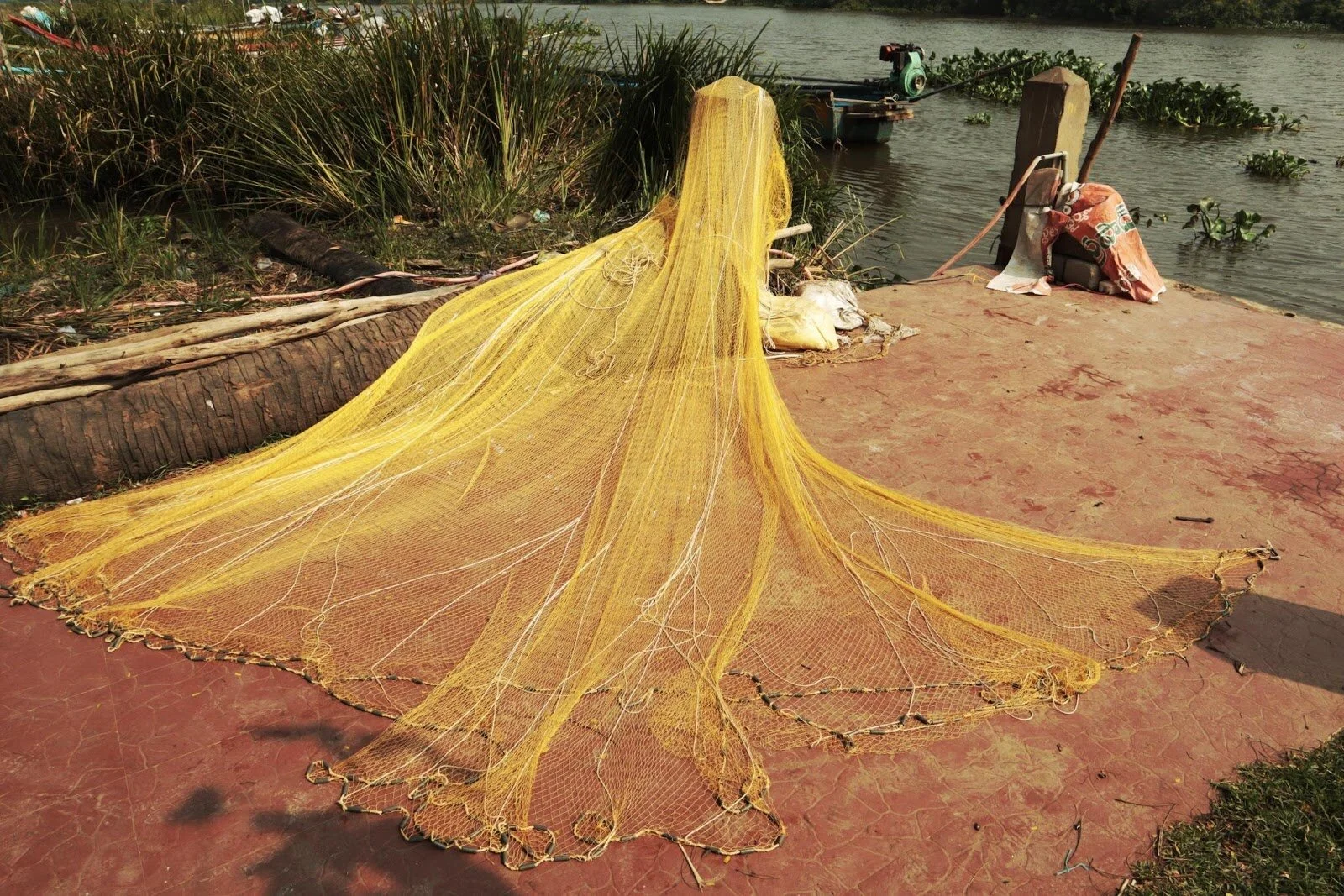Fishing Along the Coringa Mangrove Forests
Fishing boats anchored at the bank of Ramannapalem Revu. Photo: Srikanth M.V.
Photo Gallery: The mangrove forests of Coringa in Andhra Pradesh are home to fishing communities that live close to the bank of the Korangi river, their livelihood dependent on the unique ecosystem of the region.
The mangrove forests of Coringa are situated just south of Kakinada Bay in Andhra Pradesh, on the eastern coast of India, where the Godavari river meets the sea. Coringa (originally Korangi) covers an area of 235 square kilometers and hosts the second-largest contiguous mangrove forest in the country, after the Sundarbans.
The entire stretch has villages with fishing communities living close to the banks of the river Korangi and other tributaries, whose primary source of livelihood is dependent on the unique ecosystem. Ramannapalem village is home for around 600 families.
Fishing has been an occupation practiced by the residents for generations. Unique methods are used for catching fish from these canals and also the place where the river joins the sea.
Fishing nets spread on the platform for drying up. Photo: Srikanth M.V.
The fisherfolk of the region are rich in the knowledge of the ecosystem of mangrove forests and various life forms of the region, knowledge that allows them to earn additional income occasionally by also working as tourist guides.
Local fisherman parks his boat on the shore. Photo: Srikanth M.V.
The fishermen leave for the day’s hunt before dawn and return by 9 am or so. There are also pre-decided routes and boundaries set amongst the fisher folk on where to catch fish, thereby avoiding disputes and maintaining harmony.
Voleti Satyam (65) a resident of Ramannapalem village. Photo: Srikanth M.V.
“I have spent most of life fishing and we are very deeply associated with the ecosystem here, but things change and we find both good and bad in it. We do not find some variety of fish anymore, but we do earn little more these days on the regular fish itself.”
Voleti Chiranjeevi (37) fisherman from Ramannapalem village. Photo: Srikanth M.V.
“When the season of fishing ban arrives, we move to the cities in search of work masonry and other labour work in the constructions. The younger generations are getting education and doing some small jobs in the cities nearby. There are many first-generation learners from our community itself.”
For the kids of the village, the pandemic resulted in serious disruption of studies and classes. Lack of digital infrastructure and decent internet connectivity, they cannot access online classes. Their only hope is to wait for the offline classes to resume.
Raju (10) and Ramalakshmi (9) fiddling with kites on a morning. Photo: Srikanth M.V.
While men from the village spend most of their on boats catching fish, and the women fold being busy with household chores, it becomes the duty of the oldest kid to take care of the babies. They play around near the shores and the parked boats, while the grand parents or old men keep a track of their mischief sitting in the shade.
Suribabu (12) and his friends playing around an unused fishing boat. Photo: Srikanth M.V.
“We start mending our nets after we return from the day’s hunt, most of our lives are spent on water with boats and nets. These things are very dear to us.”
Prasad, mending his fishing net after returning from the day's hunt. Photo: Srikanth M.V.
The fish markets and the distribution of fish is mostly taken care of by the women of the family. The day’s catch is usually sold here at the market to the traders who come from the nearby towns and city (Kakinada). Their average income is around 10,000 rupees per month.
A makeshift fish market alongside the Kakinada-Yanam highway, usually seen crowded in the wee hours of the day. Photo: Srikanth M.V.
***
Srikanth M.V. is a student of Journalism and Mass Communication at EFL University in Shillong. His areas of interest are Music, Poetry, Films and Photography. You can find him on Instagram: @sreekanth_mv.









